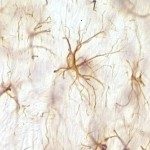Lien vers Pubmed [PMID] – 10540282
Mol. Microbiol. 1999 Oct;34(1):10-23
The Listeria monocytogenes InlB protein is a 630-amino-acid surface protein that mediates entry of the bacterium into a wide variety of cell types, including hepatocytes, fibroblasts and epithelial cells such as Vero, HEp-2 and HeLa cells. Invasion stimulates host proteins tyrosine phosphorylation, PI 3-kinase activity and rearrangements in the actin cytoskeleton. We previously showed that InlB is sufficient for entry of InlB-coated latex beads into cells and recent results indicate that purified InlB can stimulate PI 3-kinase activity and is thus the first bacterial agonist of this lipid kinase. In this study, we identified the region of InlB responsible for entry and stimulation of signal transduction events. Eight monoclonal antibodies directed against InlB were raised and, of those, five inhibited bacterial entry. These five antibodies recognized epitopes within the leucine-rich repeat (LRR) region and/or the inter-repeat (IR) region. InlB-staphylococcal protein A (SPA) fusion proteins and recombinant InlB derivatives were generated and tested for their capacity to mediate entry into cultured mammalian cells. All the InlB derivatives that carried the amino-terminal 213-amino-acid LRR region conferred invasiveness to the normally non-invasive bacterium L. innocua or to inert latex beads and the corresponding purified polypeptides inhibited bacterial entry. In addition, the 213-amino-acid LRR region was able to stimulate PI 3-kinase activity and changes in the actin cytoskeleton (membrane ruffling). These properties were not detected with purified internalin, another invasion protein of L. monocytogenes that displays LRRs similar to those of InlB. Taken together, these results show that the first 213 amino acids of InlB are critical for its specific properties.




